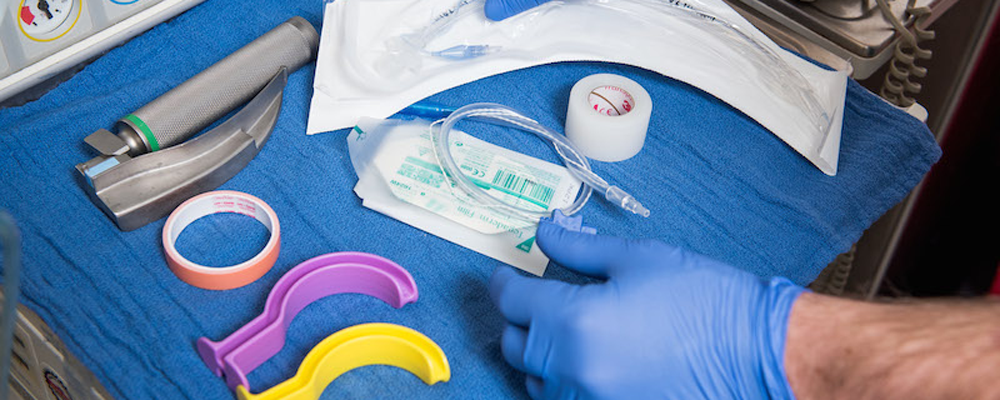The goals of anesthesia care are to allow patients to undergo surgical or other medical procedures with minimal discomfort while minimizing risk and to help facilitate medical care with the best result possible.

Anesthesia care not only involves treatment during a medical procedure, but may include pre-procedure medical evaluation, the management of acute, chronic, or cancer pain, and the provision of critical care treatment in intensive care units.
Anesthesiologists are the medical doctors trained to administer and manage anesthesia given during a surgical procedure. They are also responsible for managing and treating changes in a patient's critical life functions - breathing, heart rate, and blood pressure - as they are affected by the surgery being performed. Further, they immediately diagnose and treat any medical problems that might arise during and immediately after surgery.
Anesthesiologists at UAB direct a team of individuals who may be involved in patient care. Anesthesiology resident physicians in training and certified registered nurse anesthetists are part of the team that provides monitoring and care during procedures.
When a patient faces surgery, he/she will meet with the anesthesiologist before the procedure. The anesthesiologist will review the patient's medical condition and history to plan the appropriate anesthetic for surgery.
During surgery, the patient is given some form of anesthesia, the medicine administered for the relief of pain and sensation during surgery. The type and dosage of anesthesia is administered by the anesthesiologist or a member of the anesthesia care team under the direction of the anesthesiologist.
There are various forms of anesthesia. The type of anesthesia used depends on the type of surgery and the patient's medical condition. Usually, an anesthesiologist will administer a variety of different medications such as sedatives, medications to relieve or prevent pain, those to reduce memory of the event, and those necessary to improve the operating conditions for the surgeon. The different types of anesthesia are as follows:
- Local Anesthesia is medicine given to temporarily stop the sense of pain in a particular area of the body. A patient remains conscious during a local anesthetic. For minor surgery, a local anesthetic can be administered via injection to the site. However, when a large area needs to be numbed, or if a local anesthetic injection will not penetrate deep enough, physicians may resort to regional anesthetics.
- Regional Anesthesia means numbing only the portion of the body which will be operated on. Usually an injection of local anesthetic is given in the area of nerves that provide feeling to that part of the body. There are several forms of regional anesthetics, some of which are described below:
- Spinal Anesthetic is often used for lower abdominal, pelvic, rectal, or lower extremity surgery. This type of anesthetic involves injecting a single dose of the anesthetic agent directly into the spinal canal in the lower back, causing numbness in the lower body.
- Epidural Anesthetic is similar to a spinal anesthetic and also is commonly used for surgery of the chest, abdomen, legs and during labor and childbirth. This type of anesthesia involves continually infusing drugs through a thin catheter that has been placed into the space that surrounds the spinal canal in the mid or lower back, causing numbness to those areas.
- Brachial plexus is a local anesthetic injected in a space containing a bundle of nerves that supply the upper extremity and cause numbness in the whole arm.
- General Anesthesia causes a patient to be unconscious during surgery. The medicine is either inhaled through a breathing mask or tube, or administered through an intravenous line, a thin plastic tube inserted into a vein (usually in the patient's forearm). A breathing tube may be inserted into the windpipe to maintain a proper airway and adequate breathing during surgery. Once the surgery is complete, the anesthesiologist discontinues the anesthetic and the patient wakes up in the recovery room. In most cases the induction of sleep is done by injecting through the intravenous line.